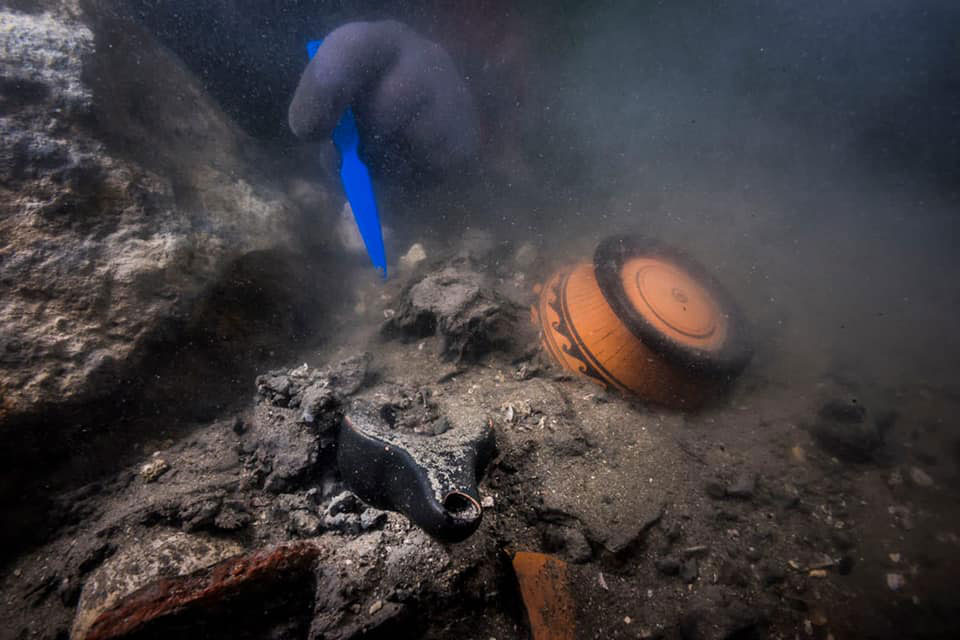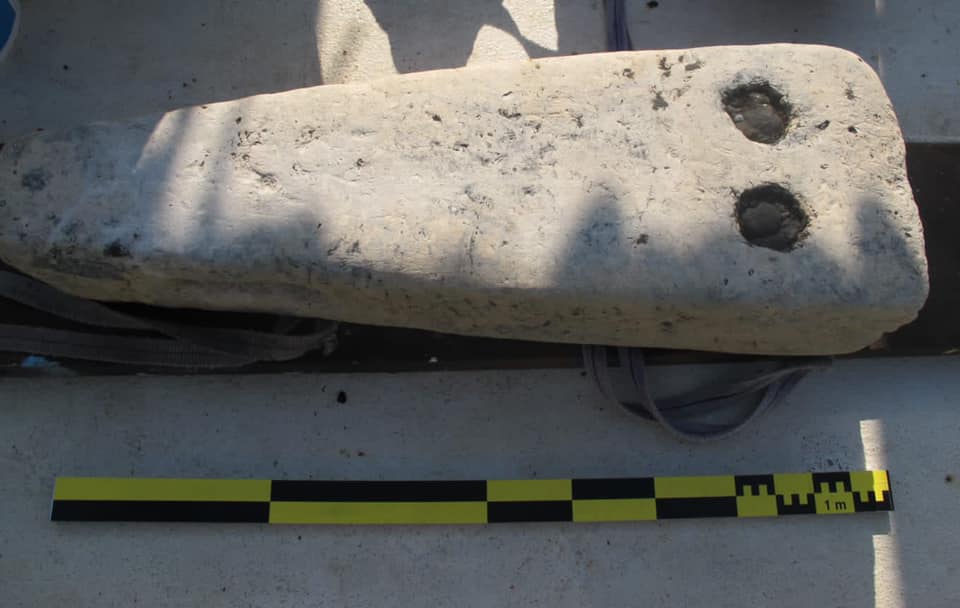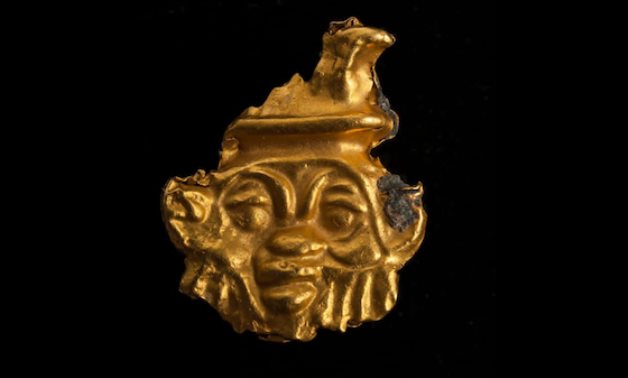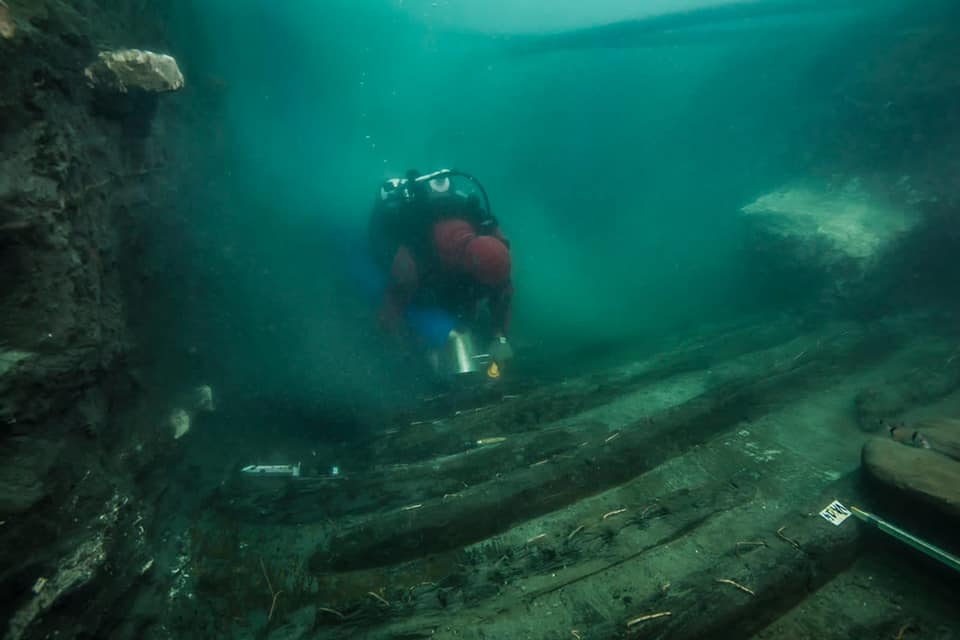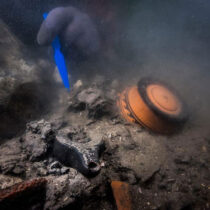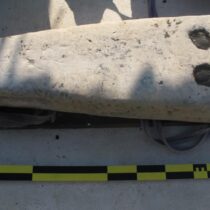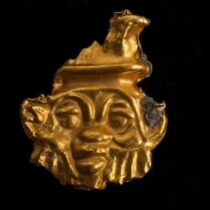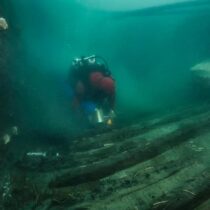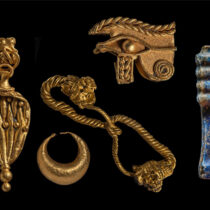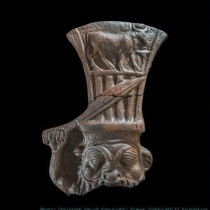A funerary tumulus and a shipwreck have been revealed and explored during the latest research season at the sunken city of Thônis-Heracleion, in Abu Qir bay-Alexandria.
During underwater excavation carried out by the Egyptian-French underwater mission at the sunken city of Heracleion in Abu Qir, led by the European Institute for Underwater Archaeology (IEASM) uncovered remains of a military vessel and a funerary complex.
Dr. Mostafa Waziry, Secretary general of the Supreme Council of Antiquities, has discovered, in the submerged city of Thônis-Heracleion, a remains of a military vessel, which sank receiving huge blocks of the famed temple of Amun when it was totally destroyed during a cataclysmic event in the second century BC. The ship was to be moored at a landing stage in the canal that flowed along the south face of the temple when the disaster occurred. The fallen blocks have maintained those preciousnaval remains nailed down to the bottom of the deep canal now filled with the debris of the sanctuary.
Dr. Ayman Ashmawy , Head of Egyptian Antiquities Sector at the Ministry of Tourism and Antiquities of Egypt, also announces that the ship has been detected under nearly 5 meters of hard clay mingled with vestiges of the temple, thanks to a cut-edge prototype sub-bottom profiler electronic equipment.
Franck Goddio pointed out that the finds of rapid ship of this age remain extremely rare with the only example of the Punic Marsala Ship (235 BC). The Hellenistic ships of this type were completely unknown, on the archaeological point of view, before this discovery.
Ehab Fahmy, Head of the Central Department of Underwater Antiquities said that the preliminary study shows that the hull of this ship was built in the classical tradition and relied on long mortise-and-tenon joints and well-developed internal structure. However, it contains the features of Ancient Egyptian type of construction and thus allows to speak about a mixed type of construction. It was a rowing ship that was equally provided with a large sail as evidenced from its mast step of considerable dimensions. This long boat was flat-bottomed and had a flat keel, quite advantageous for the navigation on the Nile and within the Delta. Some typical Ancient Egyptian shipbuilding features, together with the evidence for wood reuse, indicate that the ship was built in Egypt. With a length of more than 25 m it had alength to breadth ratio close to 6 to 1.”
In another part of the city, a tumulus stretching alongside the north-east entrance canal, also revealed remains of a large Greek funerary area all covered with rich donations. They date back from the very first years of the 4th century BC. This discovery beautifully illustrates the presence of the Greeks merchants who lived in that city controlling the entrance to Egypt at the mouth of the Canopic branch of the Nile. The Greeks were allowed to settle in this city during the late Pharaonic dynasties. They built their own sanctuaries close to the huge temple of Amun. Those were destroyed, simultaneously and their remains are found mixed with those of the Egyptian temple.
Important remains of the temple of Amun slipped into the deep canal during the land slide caused by a land liquefaction phenomenon. They are discovered in a pristine state of preservation. They are the witnesses of the richness of the sanctuaries of this city, now located under the Sea at 7 kilometers from the present coast of Egypt.
Thônis-Heracleion was for centuries the largest port of Egypt on the Mediterranean Sea before the Foundation of Alexandria by Alexander the Great in 331 BC. Several earthquakes followed by tidal-waves which triggered land liquefactions caused a 110 square kilometers portion of the Nile delta, with the cities of Thônis-Heracleion and Canopus,to collapse under the Sea. Both cities were rediscovered by the IEASM in collaboration with the Underwater Archaeology Department of the Ministry of Tourism and Antiquities, respectively in 2001 and 1999.”
